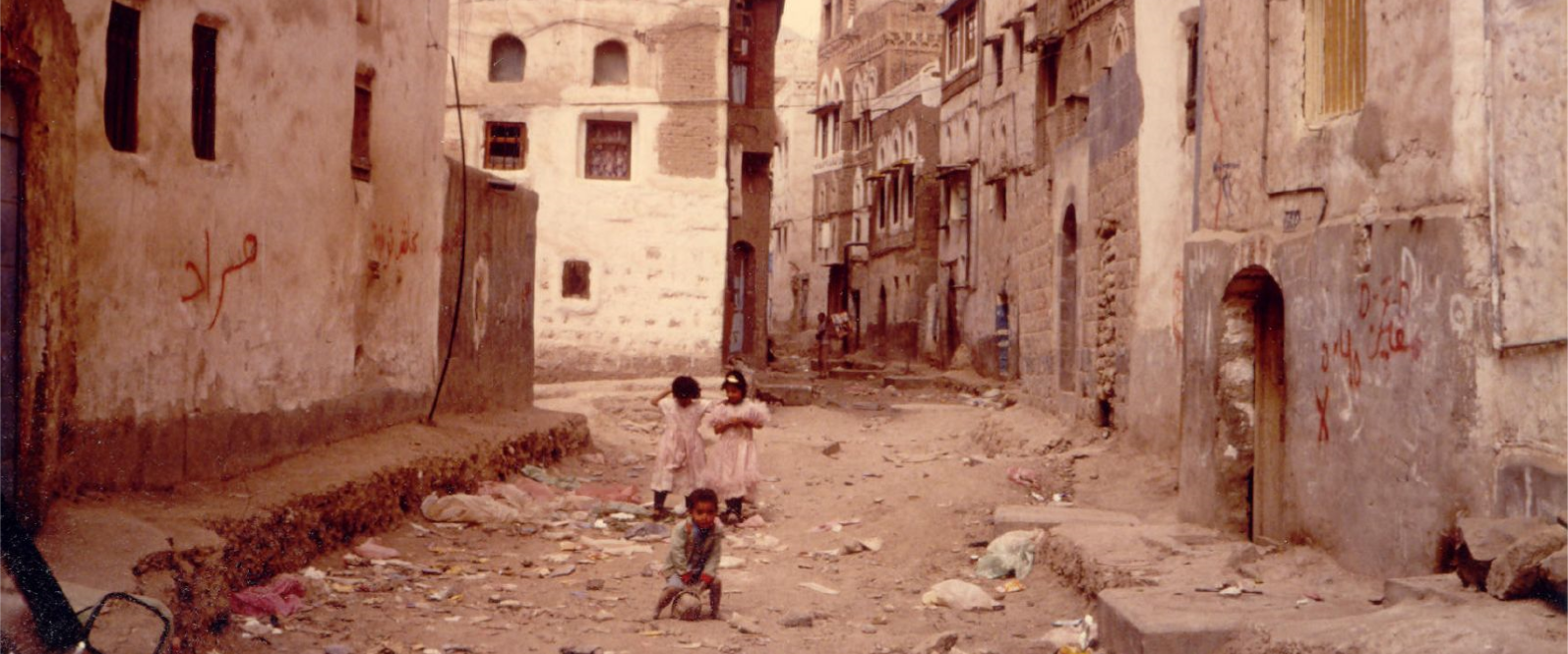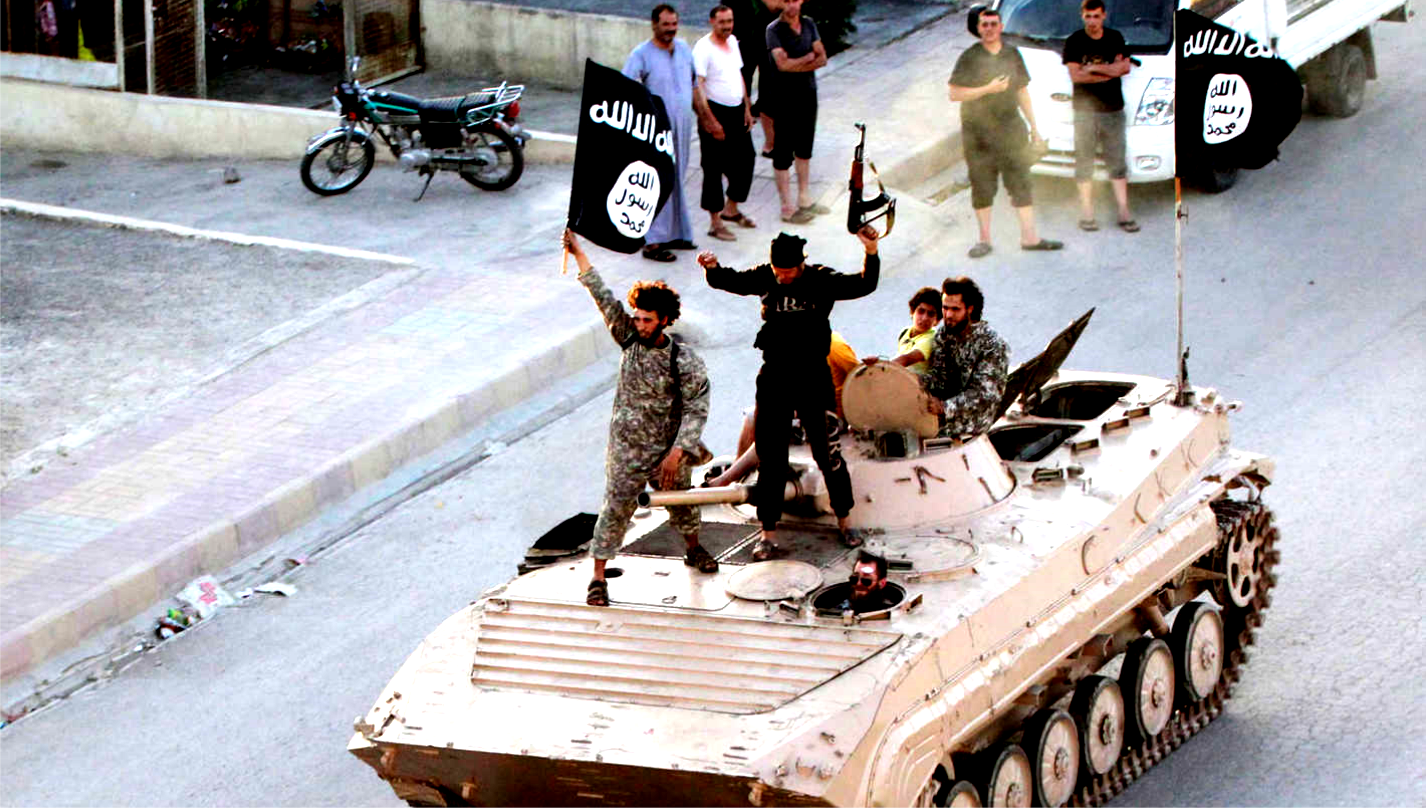Al Qaeda has taken advantage of the US’s distraction with ISIS to gain ground in Yemen. To stop al Qaeda, the US must help Yemen find a way to restore peace.
As a rule, warfare produces unintended consequences: World War II and its use of the atomic bomb set the stage for the Cold War, the Opium Wars established a precedent of oppressive and oftentimes bloody foreign control in China, and Russia’s Pugachev Rebellion halted Catherine the Great’s liberal reforms and brought decades of suffering upon the Russian people. In the Middle Eastern country of Yemen, the conflict between the Houthi movement and the exiled President Hadi has allowed a monster to emerge unexpectedly from the Arabian quagmire. Al Qaeda in the Arabian Peninsula has manipulated the chaos resulting from the civil war to set up an alternative government, or quasi-state, within Yemen’s borders. The United States has a deep security interest in ensuring that al Qaeda does not cement its power in the Middle East, especially since the US is concentrating its anti-terror effort on fighting ISIS. In the end, the United States must alter its current complacent strategy toward al Qaeda in Yemen, which means an increased push for peace talks between the warring Yemeni factions, as well as the re-evaluation and reduction of the US air-strike program.
A Convenient War
The past several years have seen Yemen caught in a violent and increasingly debilitating civil war between two armed, Islamic factions; this grueling conflict, waged by the Houthis and the Saudi coalition, provides the context for Al-Qaeda’s unexpected rise to power in southern Yemen.
The modern Yemeni state was formed in 1990 with the unification of the U.S.- and Saudi-backed Yemeni Arab Republic in the north, and the USSR-backed People’s Democratic Republic of Yemen in the south.
Today’s Yemen is slightly larger than the state of California, with about 200,000 square miles, and it has a population of about twenty-five million.1 It is bordered by Saudi Arabia to the north, the Gulf of Aden to the south, Oman to the east, and the Red Sea to the west.
Despite Yemen’s unification into a large state, the central government’s authority beyond the capital of Sana’a has never been never absolute, and for years the military officer who had ruled North Yemen since 1978, Ali Abdullah Saleh, held Yemen with a tenuous grasp.1 The Houthis, a socio-political movement whose base is among the Zaydi Shias of northern Yemen, rose up against Saleh’s government six times between 2004 and 2010.1 When, facing increasing pressure during 2011’s Arab Spring as well as charges of corruption, Saleh stepped down, the Houthis took the opportunity to foment a rebellion against the new government of Abed Rabbo Mansour al-Hadi. Armed Houthis quickly ousted President Hadi from the capital, Sana’a, which they have held since September 2014.2 Hadi, after some severe fighting, fled to Saudi Arabia in an attempt to rally support for his government. Saudi Arabia soon entered the conflict on behalf of President Hadi, organizing a coalition of Arab states—Bahrain, Egypt, Jordan, Kuwait, Morocco, Qatar, Sudan, the UAE, and Saudi Arabia itself—to end the conflict and restore Hadi to power.
Saudi Arabia entered the conflict against the Houthis for two key reasons: regional stability and a concern for the ideology and backing of the Houthi rebels. The Saudi government perceives that Houthi control of Yemen would create a hostile neighbor that threatens Saudi Arabia’s southern border.1 After all, the Houthis are largely composed of Shiite Muslims, while Saudi Arabia is primarily Sunni.4 The traditional tension between these branches of Islam means that a rebel victory in Yemen would put relations with Saudi Arabia on shaky ground, certainly not in Riyadh’s best interests.
The Saudi government also considers Yemen a crucial hotspot in its contest with Iran for regional dominance. The Saudis see Houthi rebels as mere proxies of the Iranian government, which many Saudis believe is bent on reemerging as the dominant Middle Eastern power.4 Today, aid from Tehran and the various states under its influence is flowing to the Houthis. While this aid is far less than Saudi support to Hadi, Riyadh’s concern does have some merit.4 For example, the appearance of a modified surface-to-air missile in Yemen in December 2015, which the Houthis dubbed the “Qahir I,” is a key sign of close Iranian support.4 Ultimately, losing Sana’a and the rest of Yemen would only give added power to what Saudi Arabia sees as an ascendant Iran with allies in Iraq, Lebanon, and Syria.3 This concern is amplified by the Saudi perception that the United States is retrenching from the region and that the 2015 nuclear deal with Iran will only serve to embolden Tehran in its providing support to the Houthis.1
In March of 2015, Saudi Arabia launched Operation Decisive Storm, meant to re-take the capital and swiftly end the war. The coalition supplied over 150 war planes for the operation, and Saudi Arabia alone deployed 150,000 ground troops.6 But despite thousands of aerial bombings and ground assaults the Saudi coalition has failed to re-capture Sana’a, and in the process of their failed attempt an estimated 6,000 people, half of them civilians, have been killed.3 The Houthis continue to dominate in Northwestern Yemen and the capital; they frequently launch rockets over the border into Saudi Arabia, killing civilians (many of them children) and stifling exploratory peace talks.3,7 Ultimately, the complete collapse of the central government and the ensuing military campaigns have resulted in an ongoing humanitarian catastrophe in Yemen, one that has displaced over 3.1 million people since March 2015, and one which unlikely to end any time soon.8, 9
Up Come the Weeds
It is the distraction and subsequent chaos caused by the civil war in Yemen that form the chief catalysts for al Qaeda’s rise to power in the region.
Al Qaeda in the Arabian Peninsula (henceforth designated AQAP) is a militant Islamist group formed in January 2009 through a union of the Yemeni and Saudi branches of al Qaeda.7 With jihadist roots extending into the early 1990s, AQAP possesses a long history of carrying out domestic insurgency and plotting attacks on the West; according to the Council on Foreign Relations, the group’s deep background has contributed to making it the “most lethal Qaeda franchise.”7 AQAP has a proven record of skilled and creative bomb-making, so the group’s capability in terms of carrying out large-scale attacks is beyond question.8 Among other international activities, the group claims responsibility for the 2014 Charlie Hebdo magazine attack in Paris, as well as multiple attempts to down U.S. airliners.5
Since the beginning of April 2015, AQAP has used the conflict between the Houthis and the Saudi coalition to dramatically increase its domestic power in the south of Yemen. The withdrawal of government military units from their bases in the south provided the perfect opportunity for AQAP forces to rush in and capture large quantities of sophisticated and advanced weapons, including shoulder-fired missiles, C4 explosives, and armored vehicles.5 While the civil war’s front lines remained in an effective stalemate in the northern regions of the country, AQAP soldiers quickly seized control of multiple cities and provincial capitals along the costal corridor between Aden and al-Mukalla.4, 10 Of the various towns and cities they captured, the most valuable was al-Mukalla, Yemen’s fifth-largest city; Mukalla brought in approximately $2 million in import taxes per day while in AQAP’s possession (not including the $100 million acquired during the original looting of the city’s banks).8 As the Houthis and the Saudi coalition were more concerned about acquiring central control than in diverting forces to drive back AQAP, the terrorist group was able to acquire their initial technological and geographical targets with relative ease.
AQAP has also ramped up its recruitment by appealing to the fears and discontent of the Yemeni people.4 According to many in Yemen’s coastal corridor, peace under AQAP’s authoritarian rule is far preferable to the chaos and peril of living under ever-shifting Hauthi or Hadi control. In the words of one 47-year-old Mukalla resident, “I prefer that al Qaeda stay here, not for Al Mukalla to be liberated…The situation is stable, more than any ‘free’ part of Yemen. The alternative to al Qaeda is much worse.”3 In order to enhance its image as capable rulers, AQAP abolished taxes for Mukalla residents, paved roads, and stocked Yemeni hospitals.3 The group has also striven to be less cruel than its rival, the Islamic State (ISIL), an organization which has struggled to control the population with brutality.3 AQAP is also using distrust of northern elites in order to ingratiate themselves with the Yemeni people; political and economic power have remained in the hands of northern leaders and tribes since the 1990 Yemeni unification, so AQAP has worked to amplify naturally occurring sectarian grievances in the South and to offer itself as an alternative to the corrupt national government.11 In addition to preventing mass revolts, these various efforts have bolstered AQAP’s numbers; while in 2014 the organization had an estimated 1,000 members, by 2015 that estimate had quadrupled to over 4,000.8
Regional Whack-a-Mole
In recent months, the Saudi coalition has taken greater measures against AQAP, launching airstrikes and even recapturing the city of Mukalla. Early this February, for example, the coalition began a major military operation to clear AQAP from the coastal corridor and the various cities under terrorist control.10 Ground and air units from the United Arab Emirates provided the bulk of military force for this anti-AQAP push, and in early March UAE airstrikes hit AQAP leadership in Burayaq and in such northern neighborhoods as Mansoura and Salahuddin. While these operations were, for the most part, carried out without resistance, a UAE Mirage 2000 jet was downed on March 14 by a terrorist-controlled missile defense system, demonstrating the continued threat posed by AQAP.10 Late April, in the largest operation against AQAP to date, approximately 2,000 Yemeni and UAE troops stormed and captured Mukalla, touting afterward that they had killed more than 800 AQAP fighters.12 These numbers are surely exaggerated, and multiple reports suggest that AQAP had withdrawn large numbers of its forces prior to the attack, but there is no disputing that the loss of Mukalla was a great blow to AQAP’s state-building aspirations.12
While the Saudi coalition has made some recent gains against AQAP and has removed some sources of income for the terrorist organization, the coalition’s divided interests of ending the civil war and eliminating AQAP cannot be sustained without external aid. According to the Washington Institute for Near East Policy, the coalition “probably cannot maintain the current level of commitment indefinitely, and the task of pressuring AQAP will grow more complicated if the group disperses into its mountain redoubts.”10 Indeed, while the civil war rages on, AQAP will be able to take advantage of the chaos to further indoctrinate the local population and slowly cement its power, even while losing geographical territory. As a result, time is on AQAP’s side; unless, of course, a power capable of effectively tracking and targeting the group’s rural camps provides committed assistance.
The American Fumble?
Since al Qaeda began gaining traction in the Arabian Peninsula, the United States has sought, with mixed success, to curb AQAP’s growth and power. US interest in preventing the spread of AQAP stems from the group’s multiple plots to bomb US airliners, including the attempted 2009 Christmas Day bombing over Detroit.13 The terror group’s origin as a union of two al Qaeda branches naturally makes it all the more dangerous in American eyes.
Nevertheless, US policymakers have tended to focus their energies in the Middle East on the threat posed by ISIS, rather than that of AQAP. This limited attention on defeating ISIS in Iraq, Syria, and now Libya, has created space for AQAP to expand and consolidate their positions on the ground.14 America’s preoccupation with ISIS is partially due to recent efforts on the part of AQAP to cut back on international terror attacks and drop of US intelligence radars; in the words of security and Middle East expert Katherine Zimmerman, the group’s leadership has “most likely decided not to operationalize attacks against the US at this time so that American policymakers’ attention remains fixated on the threat from…ISIS.”14 The absence of AQAP terror attacks over the past couple years does not mean that the group is incapable of conducting further attacks, nor that it has abandoned its desire to attack the US; rather, it means that AQAP’s leaders are smart enough to take advantage of American distraction to prepare themselves for future struggles.14
Today, US policy toward AQAP is largely limited to targeted airstrikes. Prior to the Yemeni civil war, the CIA and Joint Special Operations Command carried out scores of drone strikes in Yemen under the Obama administration, killing anywhere between 650 and 1,100 people by March 2015.7 Since the collapse of Yemen’s central government in early 2015, the US has continued to carry out these aerial strikes against AQAP’s senior leaders. For example, on February 4, 2016 an American airstrike killed a top AQAP military commander, Jalal Bal’idi al Marqishi.14 In 2016 alone, the military and the CIA have launched approximately 25 drone strikes against AQAP in Yemen, usually with high rates of success; in three separate attacks over late August and early September of 2016, for example, the US killed 13 al Qaeda operatives.13
While these airstrikes have resulted in the deaths of multiple AQAP leaders, they have ultimately proven ineffective in achieving the United States’ “big picture” objective: destroying AQAP’s strike potential. Even as US drones continue to target AQAP’s leadership, the group draws on the depth of experience among its veteran operatives and is quick to provide replacement leaders even as old ones are killed.14 This reality, reminiscent of the myth of the hydra, has led the American Enterprise Institute’s “Crisis Management Project” to note that “US airstrikes have had no effect at all on [AQAP’s] expansion and have not significantly degraded the group’s ability to target the United States.”14 Indeed, a strategy that consists solely of sparse strikes against replaceable leaders will do little to stop AQAP, which relies on its wealth, experience, recruitment ability, and the distraction posed by ISIS to keep it afloat. In fact, such a narrow policy will only ensure that the group will remain a threat to the United States in the future.14 Furthermore, many experts challenge the strategic wisdom of drone strikes due to their effects on civilian populations; because drone strikes often cause civilian or bystander casualties, they can engender anti-Americanism and make aggrieved kinsmen of victims sympathetic to AQAP, swelling the terror group’s ranks.1
The current American strategy still rests on—and waits for—a united Yemeni government to lead the ground fight. Even with US support to President Hadi and the Saudi coalition, however, the end to Yemen’s civil war and national re-unification is nowhere in sight.1,14 The United States remains the only party capable of effectively tracking and targeting the AQAP’s rural camps, but until there is a legitimate, sovereign government in Sana’a to lead the effort (Hadi’s or otherwise), the US will remain unwilling to shift strategies or act unilaterally.10 After all, a divided country is what caused AQAP’s ascendency in the first place, and thus fighting the group inside war-torn Yemen would be an uphill battle, particularly when AQAP has millions of dollars in revenue and technology to bring to bear in the struggle.
What is to be Done?
Possible solutions for the United States are few if it intends to eliminate AQAP’s strike ability; however, there are a few courses of action which the United States should immediately adopt.
First, the Unites States must become more involved in ending the Yemeni civil war and in restoring peace to Yemen. This does not mean sending in military support to the Houthis or the Saudi coalition; rather, it means actively coordinating and mediating dialogue between the Houthis and President Hadi—particularly at the regional and local levels—to de-escalate the war.14 The United States has traditionally supported President Hadi and certainly does not want Iranian-backed Houthis taking control in Yemen, but the US should be willing to closely examine different options that can satisfy both warring parties if such an agreement would enable a Sana’a-led anti-AQAP operation.15 While such peace talks have broken down in the past, the US has heretofore played only a small role in the effort to bring both sides to the table, and since conflict termination is in the interests of all sides (except AQAP), it would certainly not be an impossible task to attain peace with the influence of the US backing the negotiations.10
Second, the United States must carefully re-evaluate and drastically reduce its dependence on AQAP drone strikes. As mentioned earlier, targeted killings directed at AQAP leaders do little to help advance US security interests; rather, they remove leaders that are easily replaced, and are used as AQAP recruitment tools for a people bitter toward the nation that killed their relatives and loved ones. In the words of the Brookings Institution, “If America wants to weaken al-Qaida in Yemen, it needs at a minimum to stop pursuing policies that are bound to enrage and embitter Yemenis who might otherwise be neutral”; this includes drone strikes.16 America should not necessarily put a wholesale stop on the Yemeni drone program, but it must take care to be more discriminate in its use of lethal force in order to prevent AQAP from using those strikes to augment its own power.
Conclusion
In the end, US preoccupation with the ISIS threat, as well as the massive civil war that engulfed Yemen and sparked a humanitarian catastrophe paved the way for AQAP’s unexpected rise to power. While AQAP has made temporary efforts to avoid “awaken the beast” by not carrying out international terrorist attacks in the past couple years, the group’s history and skill-set make it a continued and ever-more serious threat to national security interests. The US must not be lulled into complacency as AQAP focuses on its local presence.14 On the contrary, it must be proactive in crafting reasonable solutions to the Houthi-Saudi coalition struggle, and it must be willing to reduce its sole reliance upon attacking AQAP leadership and attack cells. While it is important to eliminate threats such as Jalal Marqishi, the current strategy just chops a head off the hydra and merely intensifies anti-American sentiment, doing nothing to destroy AQAP’s strength at the recruitment level. Once the civil war is ended, the United States will be able to more effectively partner with and support regional efforts to eliminate al Qaeda’s presence from the Arabian Peninsula (economically and militarily), but they must in the mean time realize the limits of their current strategy and vigorously push for stability in the war-torn state of Yemen. ■
- Zachary Laub, “Yemen in Crisis,” Council on Foreign Relations, 19 April 2016, http://www.cfr.org/yemen/yemen-crisis/p36488.
- Ahmed Alwly, “Despite Arab, US Attacks, AQAP Still Holding Out in Yemen,” Al-Monitor, 13 May 2016, http://www.al-monitor.com/pulse/originals/2016/05/yemen-al-qaeda-us-terrorism-hadi-mukalla-drones.html.
- Katie Paul, “Rockets Hit Saudi Border Town as Yemen War Flares Anew,” Reuters, 29 August 2016, http://www.reuters.com/article/us-yemen-security-saudi-idUSKCN1141QG.
- Katherine Zimmerman, “Signaling Saudi Arabia: Iranian Support to Yemen’s al Houthis,” AEI Critical Threats, 15 April 2016, http://www.criticalthreats.org/yemen/zimmerman-signaling-saudi-arabia-iranian-support-to-yemen-al-houthis-april-15-2016.
- Yara Bayoumy, Noah Browning, and Mohammed Ghobari, “How Saudi Arabia’s War in Yemen Has Made al Qaeda Stronger – and Richer,” Reuters, 8 April 2016, http://www.reuters.com/investigates/special-report/yemen-aqap/.
- “Factbox: Saudi-led coalition against Yemen’s Houthis,” Reuters, 10 April 2015, http://www.reuters.com/article/us-yemen-security-coalition-factbox-idUSKBN0N11F220150410.
- “Al-Qaeda in the Arabian Peninsula (AQAP),” Council on Foreign Relations, 19 June 2015, http://www.cfr.org/yemen/al-qaeda-arabian-peninsula-aqap/p9369.
- “The Quadrupling of Al-Qaeda in Yemen,” The Soufan Group, 6 June 2016, http://soufangroup.com/tsg-intelbrief-the-quadrupling-of-al-qaeda-in-yemen/.
- “Crisis analysis of Yemen,” Acaps, 2016, https://www.acaps.org/country/yemen/crisis-analysis.
- Michael Knights and Alexandre Mello, “Gulf Coalition Targeting AQAP in Yemen,” The Washington Institute, 10 May 2016, http://www.washingtoninstitute.org/policy-analysis/view/gulf-coalition-operations-against-aqap-in-yemen.
- Carla E. Humud, “Al Qaeda and U.S. Policy: Middle East and Africa,” Congressional Research Service, 11 August 2016, https://fas.org/sgp/crs/mideast/R43756.pdf.
- Thomas Joscelyn, “Arab coalition enters AQAP stronghold in port city of Mukalla, Yemen,” The Long War Journal, 25 April, 2016, http://www.longwarjournal.org/archives/2016/04/arab-coalition-enters-aqap-stronghold-in-port-city-of-mukalla-yemen.php.
- Bill Roggio, “US military kills 13 AQAP fighters in latest strikes in Yemen,” The Long War Journal, 8 September 2016, http://www.longwarjournal.org/archives/2016/09/us-military-kills-13-aqap-fighters-in-latest-strikes-in-yemen.php.
- Katherine Zimmerman, “AQAP Expanding behind Yemen’s Frontlines,” AEI Critical Threats, 17 February 2016, http://www.criticalthreats.org/yemen/zimmerman-aqap-expanding-behind-yemens-frontlines-february-17-2016.
- Jeremy M. Sharp, “Yemen: Civil War and Regional Intervention,” Congressional Research Service, 2 October 2015, https://www.fas.org/sgp/crs/mideast/R43960.pdf.
- Jillian Schwedler, “Is the U.S. drone program in Yemen working?” Brookings Institute, 28 September 2015, https://www.brookings.edu/blog/markaz/2015/09/28/is-the-u-s-drone-program-in-yemen-working/.
Image credits—
- eestl | https://www.flickr.com/photos/eesti/350140021/
- Backstreet in Sana’a (2006) © Ahron de Leeuw | https://www.flickr.com/photos/ahron/173731654




